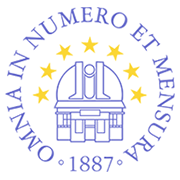CONFINED MOLECULAR SYSTEMS AND ASTROCHEMICAL MODELLING
Vladimir A. Srećković,
Nicolina Pop,
Veljko Vujčić,
Felix Iacob,,
Nikolai Bezuglov,
Zlatko Majlinger and
Magdalena D. Christova
Publication
BOOK OF ABSTRACTS AND CONTRIBUTED PAPERS: Building bridges between climate science and society through a transdisciplinary network, Page 93-94, https://doi.org/10.69646/bbbs2415
BOOK OF ABSTRACTS AND CONTRIBUTED PAPERS: Building bridges between climate science and society through a transdisciplinary network, September 10-14, 2024, Kopaonik Mt, Serbia, Edited by Vladimir A. Srećković, Aleksandra Kolarski, Filip Arnaut and Milica Langović
Published: 24. 11. 2024.
Abstract
In the past few decades, computational chemistry methods have grown in significance for studying the dynamics and interactions of small molecules encased in bigger structures (see Albert et al. 2020 and references therein). In constrained systems, molecular clouds play a crucial but little understood role despite their enormous size (Reis et al. 2022). Few hundred molecular species, including diatomic to massive anions, cations, and neutrals, are currently known to exist in interstellar space (see e.g. Roesky & Mandel 2010). Deep within molecular clouds, molecules can resist photodissociation and/or photoionizationdue to the scattering and absorption of interstellar radiation (Vujčić et al. 2023, de Lara-Castells and Hauser 2020). Thus, it is imperative to study both collisional and radiative processes.




